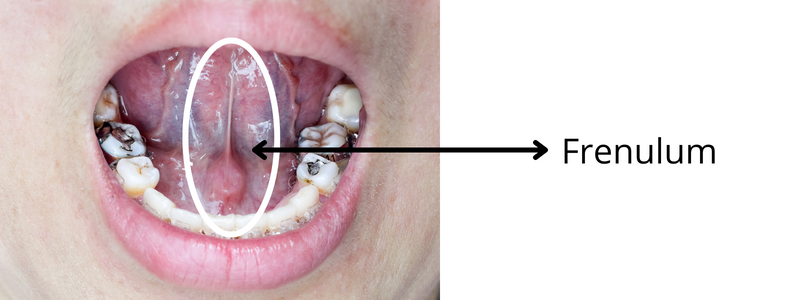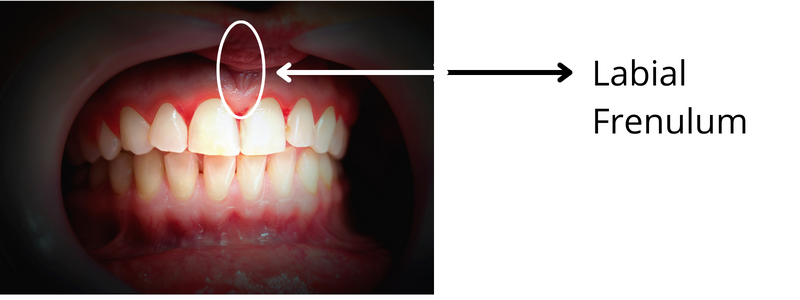Tongue Tie (Ankyloglossia) and How a Myofunctional Therapist Can Help
Introduction to Tongue Tie
Tongue tie (also known as ankyloglossia) is a congenital condition in which the lingual frenulum, the small band of tissue that connects the underside of the tongue to the floor of the mouth, is unusually short, tight, or restrictive. This can restrict the movement of the tongue, causing a range of issues, particularly with feeding, speech, and oral development. In both infants and adults, tongue tie can result in difficulty breastfeeding, speech delays, dental issues, and even TMJ dysfunction.
A Myofunctional Therapist plays a key role in treating tongue tie by addressing the functional challenges it causes. Myofunctional therapy can help children and adults by improving tongue movement, oral posture, and muscle function, supporting the recovery process following frenectomy (tongue tie release) and preventing potential future complications.
What is Tongue Tie (Ankyloglossia)?
Tongue tie occurs when the frenulum is too tight or short, restricting the tongue’s full range of motion. This can lead to a variety of functional issues, including:
- Difficulty breastfeeding in infants due to improper latch and ineffective milk transfer.
- Speech delays or unclear speech in children, particularly with sounds like “t,” “d,” “l,” and “r.”
- Difficulty swallowing or chewing.
- Dental problems, such as an increased risk of cavities and gum disease due to improper oral hygiene.
- Jaw and TMJ pain in adults, as the restricted tongue function can impact the development of oral muscles and lead to poor posture.
How a Myofunctional Therapist Can Help with Tongue Tie
A myofunctional therapist specializes in assessing and treating oral and facial muscle dysfunctions. In the case of tongue tie, a myofunctional therapist helps improve tongue mobility, train the muscles for proper function, and work with individuals pre- and post-frenectomy. Here’s how a myofunctional therapist can be beneficial:
1. Early Detection and Evaluation
In many cases, tongue tie is not diagnosed early enough, especially in infants. A myofunctional therapist can:
- Conduct a thorough oral function evaluation to assess the tongue’s mobility and how it affects breastfeeding, swallowing, and other oral functions.
- Identify signs of tongue tie in infants, children, and adults, including poor latch, difficulty making specific sounds, or swallowing problems.
- Offer guidance to parents or caregivers on how to monitor tongue tie and determine when intervention may be necessary.
2. Supporting Proper Latching and Breastfeeding in Infants
Tongue tie can severely impact a baby’s ability to latch properly, leading to poor milk transfer and frustration for both the infant and the mother. A myofunctional therapist can:
- Work with new mothers and babies to establish a proper latch, helping the baby breastfeed more effectively and comfortably.
- Provide techniques to relieve nipple pain for mothers caused by poor latch and ineffective sucking.
- Teach oral exercises to babies (when appropriate) to improve tongue function and ensure that proper breastfeeding mechanics are in place.
3. Speech and Articulation Improvement
Children with tongue tie may experience speech difficulties, including unclear speech or difficulty pronouncing certain sounds. A myofunctional therapist can:
- Evaluate speech patterns and articulation issues, particularly those related to tongue movement (e.g., difficulty with sounds like “t,” “d,” “l,” and “r”).
- Provide speech therapy techniques to help the child produce sounds correctly by improving tongue mobility and strength.
- Teach the child how to correctly position their tongue for proper speech production.
4. Post-Frenectomy Therapy for Better Results
If a baby, child, or adult undergoes a frenectomy (surgical release of the tongue tie), myofunctional therapy plays a critical role in ensuring the success of the procedure. A myofunctional therapist can:
- Enhance the results of a frenectomy by working on exercises to promote optimal tongue function after the procedure.
- Address any lingering oral motor dysfunctions that may have developed due to the restricted tongue movement before the frenectomy.
- Provide post-procedure rehabilitation exercises to improve tongue mobility, support correct swallowing patterns, and avoid the reattachment of the frenulum.
5. Improving Oral Posture and Muscle Function
Tongue tie often affects oral posture, leading to compensations that can result in TMJ issues, breathing difficulties, and poor oral hygiene. A myofunctional therapist will:
- Teach the child or adult how to maintain proper oral posture by ensuring the tongue rests against the roof of the mouth when not in use.
- Work on strengthening the oral and facial muscles to prevent the development of secondary issues such as mouth breathing, jaw pain, and teeth grinding.
- Teach techniques to promote nasal breathing instead of mouth breathing, which is often linked to tongue tie and leads to dental and postural problems.
6. Preventing Long-Term Complications
Untreated tongue tie or improper function after a frenectomy can lead to long-term complications, including speech delays, dental misalignments, and poor jaw development. A myofunctional therapist helps prevent these issues by:
- Providing a comprehensive oral therapy plan that addresses breathing, swallowing, speech, and oral hygiene.
- Offering regular follow-up sessions to ensure the child or adult maintains the benefits of treatment and does not revert to old patterns.
- Monitoring oral development in children to ensure that issues like misaligned teeth, poor jaw growth, and difficulty chewing are prevented.
7. Tailored Treatment for All Ages
Tongue tie can affect people of all ages, from infants to adults. Myofunctional therapists provide personalized treatment plans tailored to each age group:
- For infants, the therapist works on breastfeeding techniques and tongue mobility exercises.
- For children, the therapist focuses on speech, swallowing, and functional muscle development.
- For adults, the therapist addresses any long-standing issues such as TMJ pain, sleep apnea, or speech difficulties that may be related to untreated or under-treated tongue tie.
Conclusion
Tongue tie, or ankyloglossia, can significantly affect a person’s ability to eat, speak, and breathe properly, from infancy through adulthood. A myofunctional therapist plays a crucial role in managing tongue tie, whether through early intervention, post-frenectomy rehabilitation, or working on oral posture, speech, and muscle function. By addressing both the functional and developmental aspects of tongue tie, a myofunctional therapist ensures that the individual’s oral health and overall well-being are optimized.
If you or your child is struggling with tongue tie, working with a Myofunctional Therapist can help restore proper tongue function, improve speech clarity, and prevent future complications.


